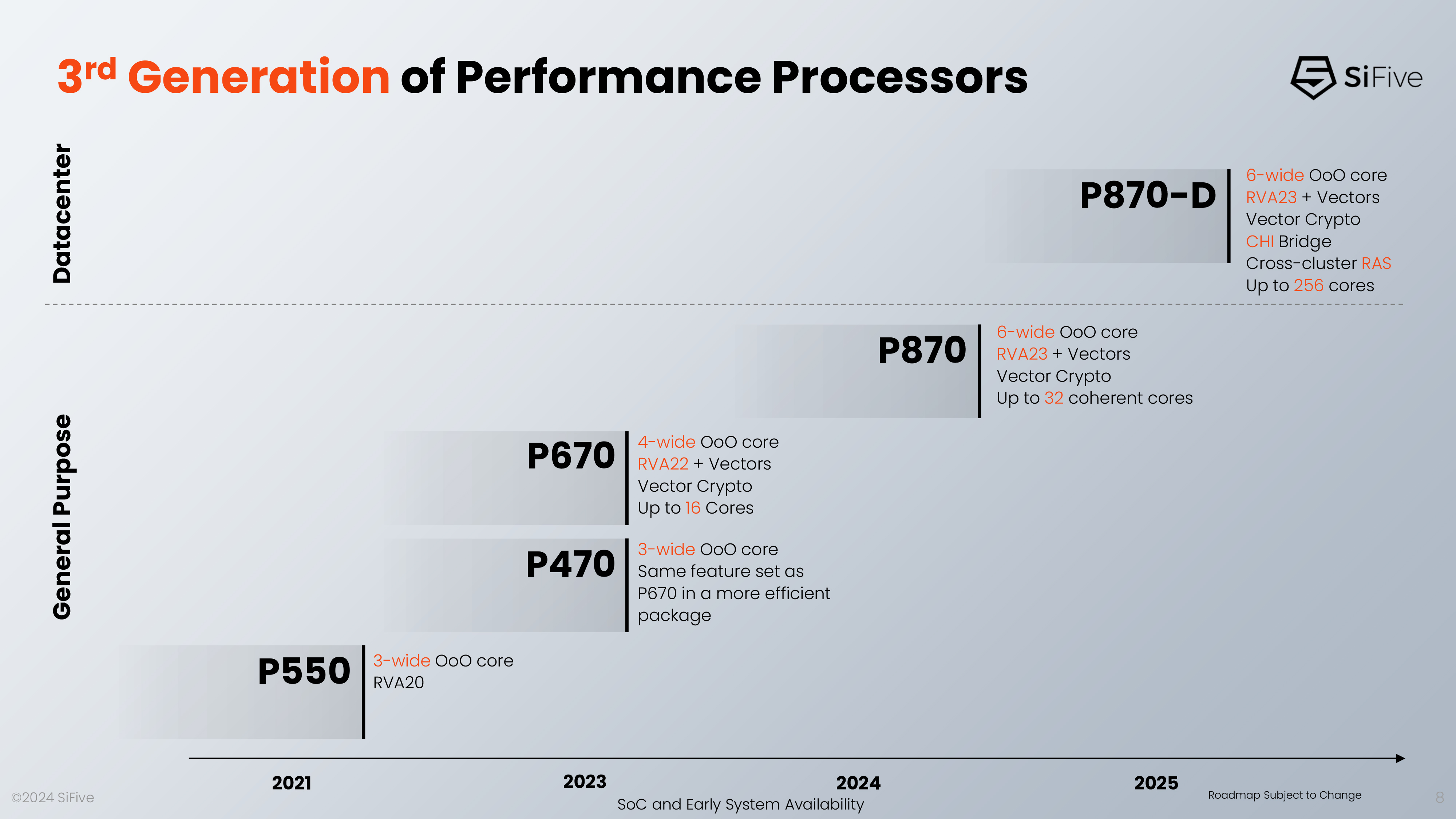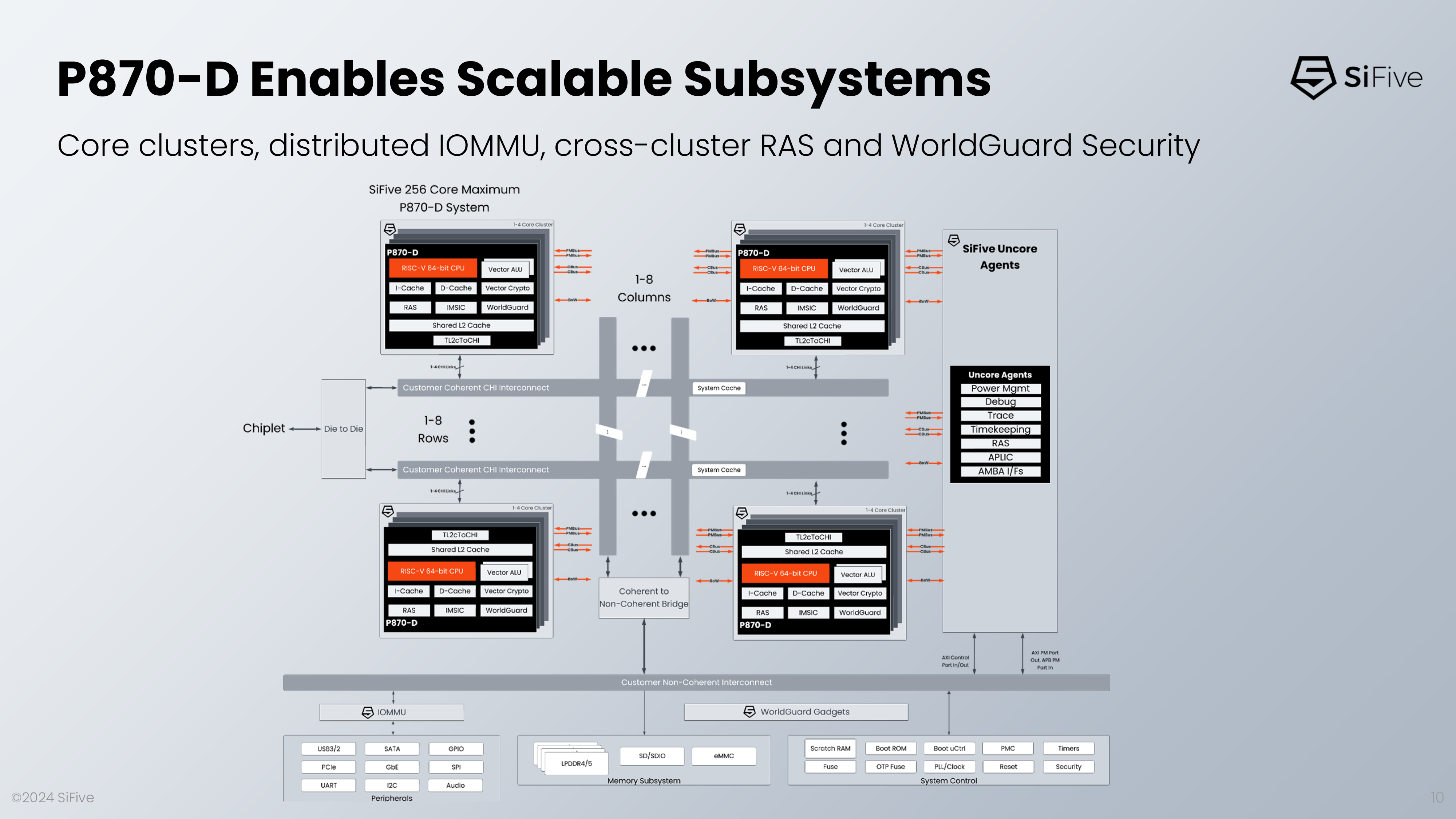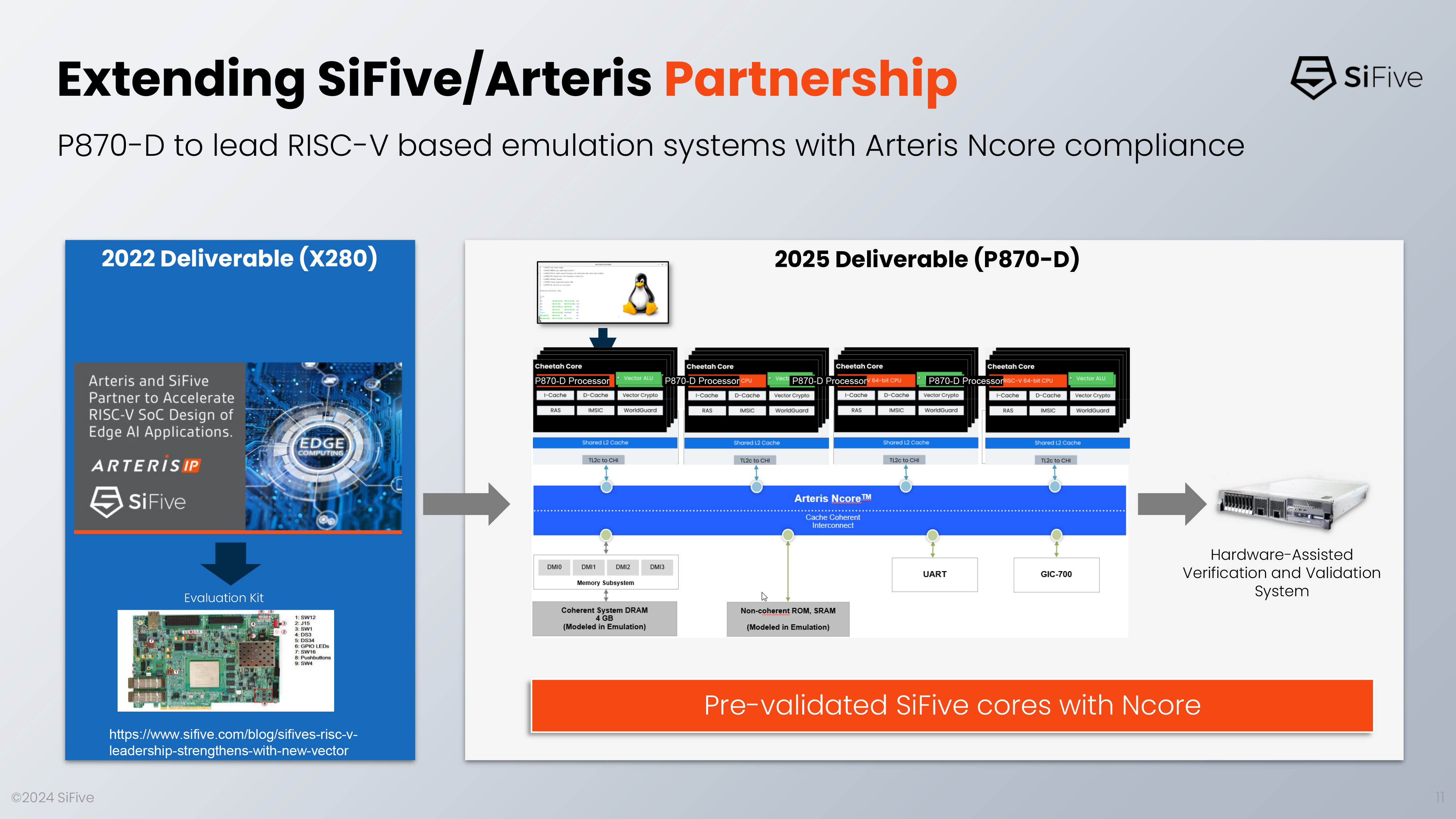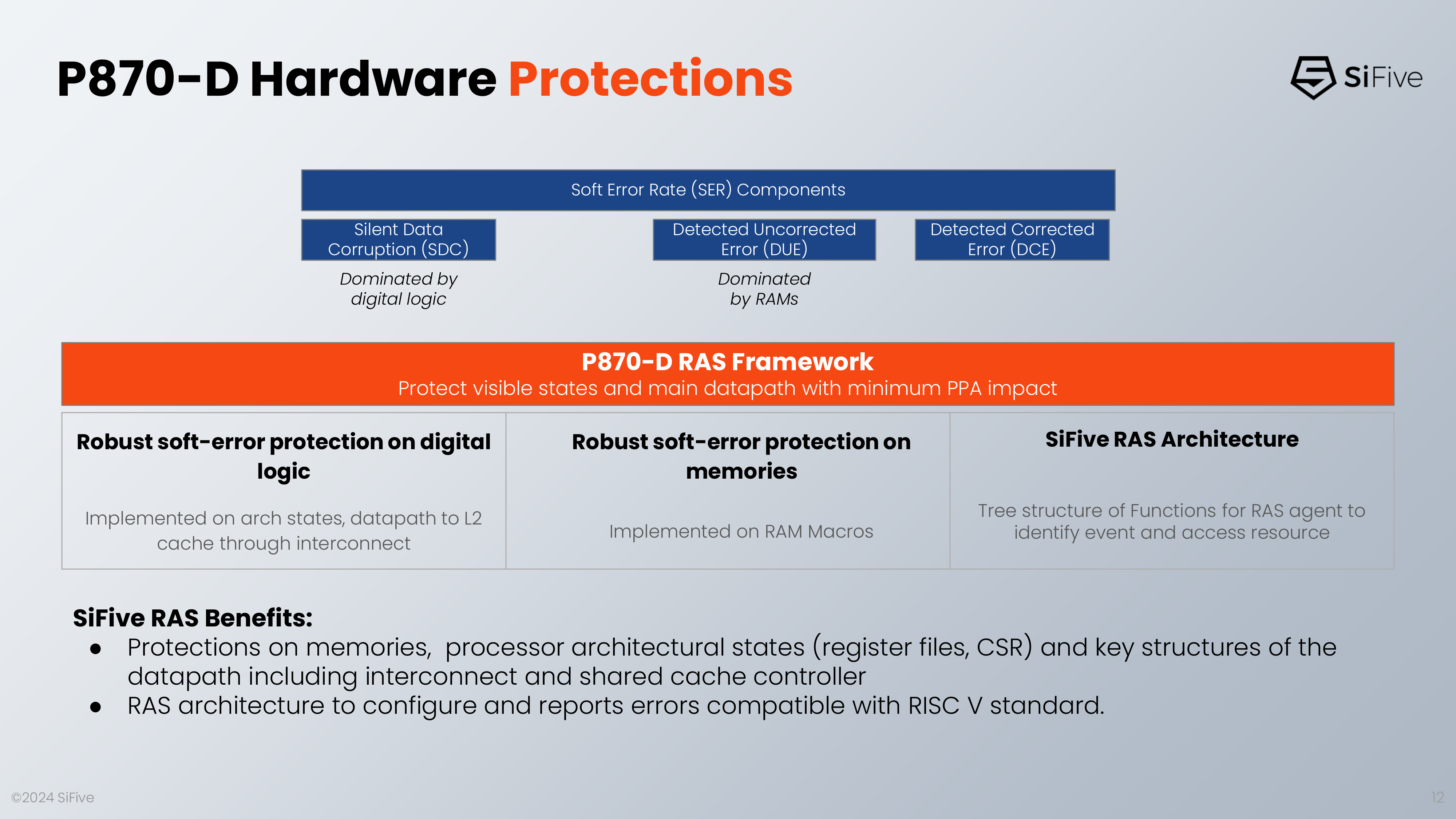SiFive sets the stage for 256-core RISC-V CPUs with P870-D core
RISC-V is coming closer to x86 in terms of features and capabilities.

SiFive has introduced the SiFive Performance P870-D, a new RISC-V processor core designed for data center applications. The new P870-D not only sets the stage for RISC-V processors with up to 256 cores, but also enables building CPUs for mission-critical systems demanding the utmost reliability.
SiFive's Performance P870-D builds upon the regular P870, which is a six-wide out-of-order core with an RVA23 profile of the RISC-V instruction set architecture with vector and vector crypto processing acceleration. The P870-D adds an open AMBA CHI bridge for energy-efficient cross-cluster communications (each cluster has from one to four cores with shared L2 cache) as well as cross-cluster reliability, availability, and serviceability (RAS) features to enable building CPUs with up to 256 cores aimed at mission-critical applications.





Additionally, the P870-D supports the RISC-V Sv57 extension, providing a 57-bit virtual address space that enhances its memory management capabilities. The processor also includes a distributed and scalable IOMMU, accelerating virtualized device IO, and meets modern safety and security standards.
"The new P870-D enhances our proven Performance architecture to bring new levels of performance, flexibility, and scalability," said John Ronco, SiFive SVP of Product. "The full solution offering from SiFive — including software, IOMMU, interrupt controller, and other uncore blocks — combined with our intelligence processors for dedicated AI compute makes it easy for our customers to achieve the most effective performance/watt/dollar metrics on AI and datacenter workloads."
To build processors with up to 256 cores, chip designers will have to license Ncore cache coherent network-on-chip from Arteris. Essentially, the SiFive P870-D allows CPU designs that are on par with those from AMD and Intel. In fact, given energy efficiency of RISC-V designs compared to x86, we can expect CPUs based on the P870-D to have an edge over rivals when it comes to performance-per-watt metrics.
"Network-on-Chip IP significantly helps streamline the process of building complex, multi-core heterogeneous SoCs with the lowest latency and high bandwidth to accommodate AI workloads," explained Michal Siwinski, CMO of Arteris. "We are pleased to continue the collaboration with SiFive, enabling the ecosystem to create high-performance and low-power RISC-V-based systems on time and budget while reducing risk."
Currently, SiFive is offering samples of the P870-D to select customers (though it is unclear with how many cores), with full production of samples scheduled for the end of 2024. SiFive expects the first processors based on the P870-D to emerge already next year.
Get Tom's Hardware's best news and in-depth reviews, straight to your inbox.

Anton Shilov is a contributing writer at Tom’s Hardware. Over the past couple of decades, he has covered everything from CPUs and GPUs to supercomputers and from modern process technologies and latest fab tools to high-tech industry trends.